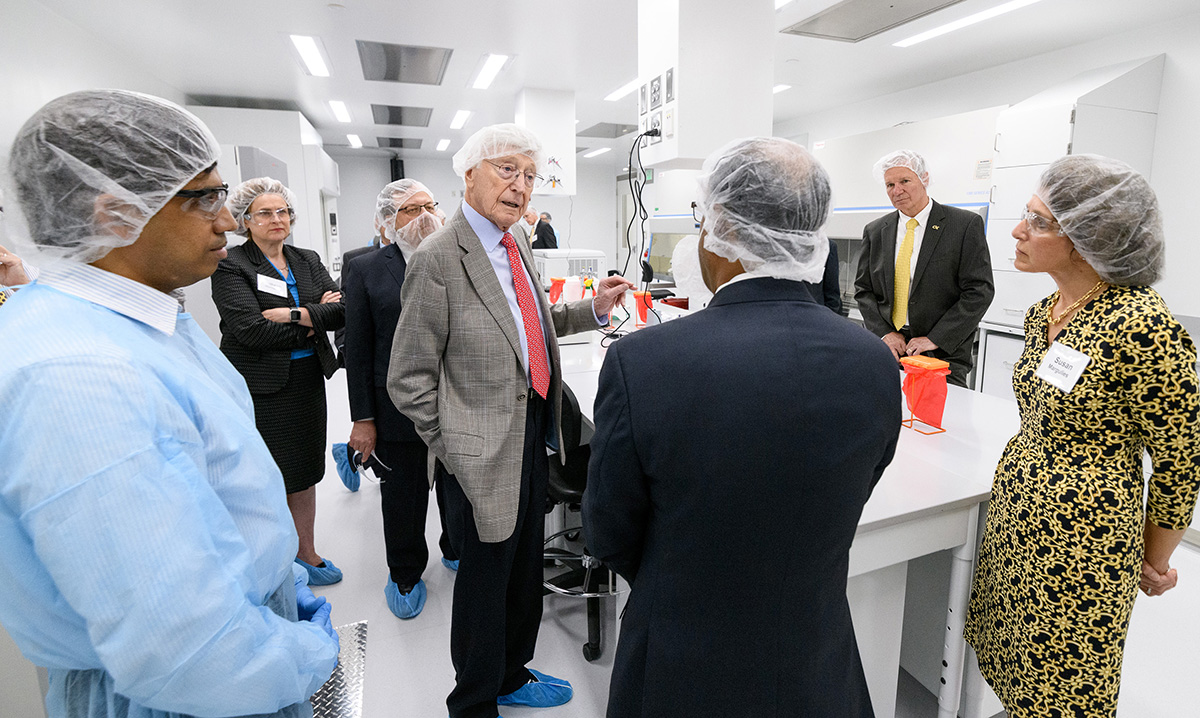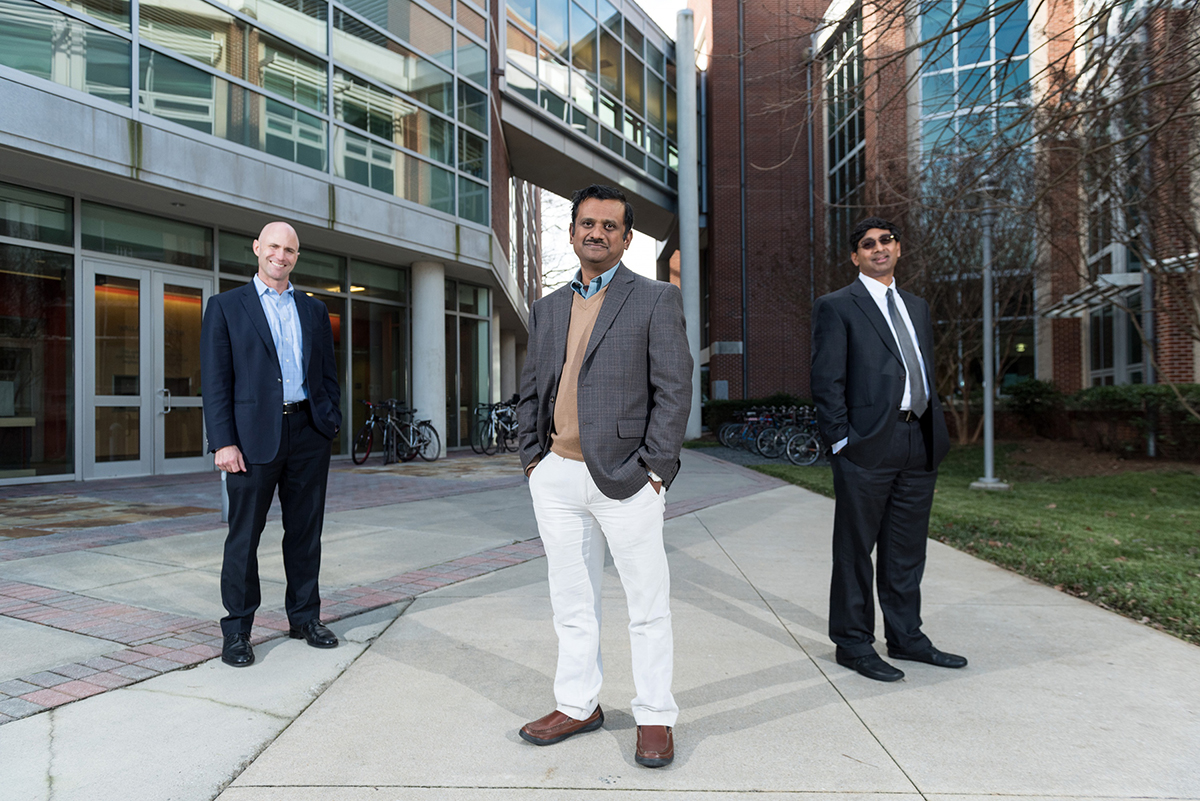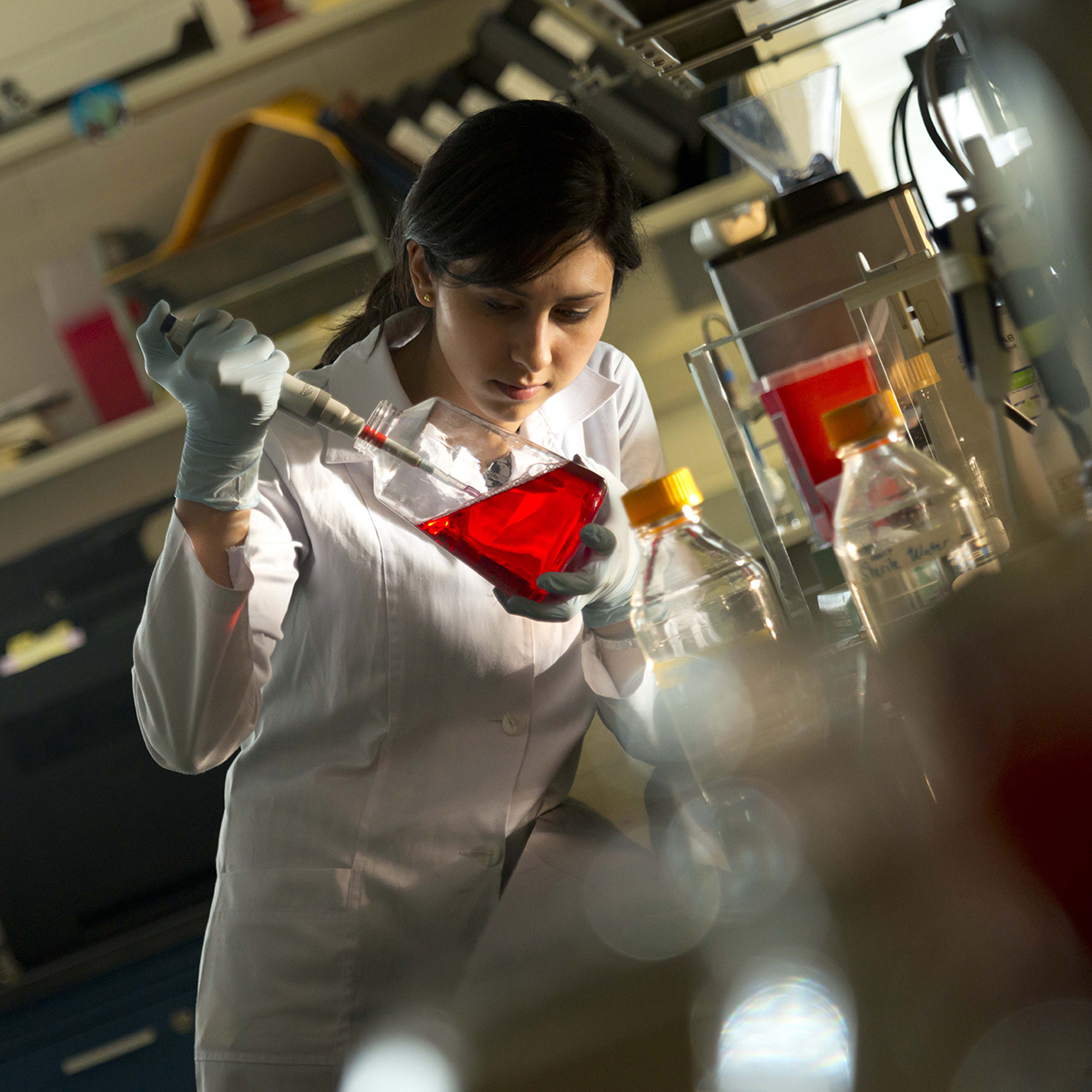
 Cell and gene therapies, a booming subsector of the biological drug industry, hold the promise of restoring patient functions that had been lost to degenerative diseases such as Parkinson’s, cancer and heart failure. Newly approved cellular therapy products include various immunotherapies, vaccines and other types of autologous (personalized for a single patient) and allogeneic (mass produced) cell therapies for bone cartilage defects, blood disorders, melanomas and diseases of the eye, such as Retinitis Pigmentosa.
Cell and gene therapies, a booming subsector of the biological drug industry, hold the promise of restoring patient functions that had been lost to degenerative diseases such as Parkinson’s, cancer and heart failure. Newly approved cellular therapy products include various immunotherapies, vaccines and other types of autologous (personalized for a single patient) and allogeneic (mass produced) cell therapies for bone cartilage defects, blood disorders, melanomas and diseases of the eye, such as Retinitis Pigmentosa.
These exciting biotechnology advancements also come with their share of challenges, particularly getting therapeutic cells produced for the market. This article discusses why access to a qualified workforce is necessary to the success of this high-growth industry and provides recommendations for identifying and building a talent pipeline.
Emerging, Fast-Growing Sector
Recently, the website Centerwatch reported that the U.S. Food and Drug Administration (FDA) expects to receive some 200 gene and cell therapy investigational drug applications (INDs) in the next two years and plans to expedite their processing by hiring up to 50 extra staffers to handle review and other tasks.
This momentum is not expected to abate any time soon. According to the National Cell Manufacturing Consortium (NCMC), the first U.S.-based national consortium of private companies, academic institutions and government entities focused on the manufacturing of therapeutic cells, this space will grow at an annual rate of more than 40 percent in the next 10 years.
Recent cell and gene therapy manufacturing announcements by Astellas, Brammer Bio, Hitachi Advanced Therapeutics, AveXis, Bluebird Bio and Pfizer further demonstrate this sector’s growth.

Cell Manufacturing Challenge
The rapid advancement of cell and gene therapy is creating challenges for manufacturers, many of which are high-growth and well-funded “gazelles” that lack the capacity to produce clinical trial batches or commercial scale medicines. While it would not be uncommon for such companies to utilize contract manufacturers (CMOs) to fulfill production needs, according to Bill Bullock, senior vice president, Economic Development of the North Carolina Biotechnology Center (NCBC), CMOs may not be a viable alternative for some young companies.
“The capacity at CMOs is expected to be very constrained in the near future,” says Bullock. “CMOs can handle only so many different products at each site, while still avoiding cross-contamination.” Thus, we can expect a surge in the construction of new cell production facilities in the next several years, both by CMOs and private companies, who may wish to also maintain full control over their production operations.
Because these facilities are relatively small (hundreds of liters of production, versus thousands or tens of thousands in a campaign-style biologics plant), to the uninitiated, site selection might seem like a relatively simple affair. However, the highly specialized manufacturing process imposes significant burdens due to the complexities associated with transporting, storing and processing raw materials (cell lines) and shipping finished product. The production of cell therapies, though not dissimilar to now-common biological medicine manufacturing, requires even greater vigilance against threats that can degrade purity, potency and efficacy.
Talent: Critical Success Factor
Because of the constant innovation occurring in this industry, the overriding criterion during site selection for cell manufacture will almost always be the availability of technical talent. Key manufacturing functions and talent needs include cGMP production, in other words, the skilled operators (“cGMP” refers to Current Good Manufacturing Practice regulations enforced by the U.S. FDA); quality assurance and quality control; logistics; skilled maintenance; and process validation (designing a manufacturing process capable of meeting FDA-enforced standards). Requirements for these positions will run the gamut from two years of technical/vocational education through doctorate-level degrees. Almost all entail some prior exposure to the clean-room manufacturing of biologics, and more specifically, cell therapeutics.

Because this nascent industry’s need for talent can outweigh concerns about costs, some cell therapy companies are opting to build their first manufacturing facilities in established, but expensive, biotech hubs. For example, Allogene Therapuetics Inc., a company with a promising cell therapy treatment for cancer, recently announced plans to build a manufacturing facility in the San Francisco Bay Area. Allogene, who has used CMOs in the past, also cited the need to bring the manufacturing “in-house” in order to keep pace with the rapidly changing innovations in the cell manufacturing process.
Identifying Key Locations
Next generation regenerative medicine demands a next generation workforce trained and ready to design and validate process automation, produce cell drugs and products, apply QA and QC protocols and manage the supply chain and transportation logistics, among other vital duties.
While experienced cell manufacturing talent is a rare commodity in all but the densest and most mature life sciences destinations, persons already experienced in the manufacture of biological drugs, vaccines and similar medicines can step into these new roles with comparatively little effort. Also, biologic drug production is now under way in a growing number of U.S. markets. “The good thing is that there are a lot of similarities with biomanufacturing and what we are seeing in cell and gene therapy,” says NCBC’s Bullock. “Much of the upstream and downstream processes are similar to any biologic.”
According to Laura Rowley, also of the NCBC, cell and gene therapy creators also should pay attention to cities and regions featuring a “cluster” of contract manufacturers. “CMO employees are particularly attractive hiring targets due to their broad expertise—the result of their contract work,” she says. “They already possess expertise with multiple bioprocesses and have the ability to learn still more.”
A less satisfying, but still viable alternative is to investigate locations where traditional, chemical-based medicines are made, or markets where other regulated industries producing products for human consumption (e.g., cosmetics and nutraceuticals) are based. While the talent pool in such locations may require significant additional training and development, their exposure to aseptic manufacturing and their prior acclimation to workplaces dominated by manufacturing “standard operating procedures” (SOPs) and rigid protocols provides a regenerative medicine company with a head start.
Find a Pipeline of New Talent
Because cell production experience is so uncommon, cell manufacturers are concerned with finding not only an existing pool of skilled biotech workers, but also a steady conduit of new supply to augment and replenish the talent pool in the future.

The newness of this industry has compelled the NCMC to devote a significant portion of its efforts to developing the workforce necessary to help bring about the large-scale and cost-effective manufacture of cell therapies in the U.S. As stated in the NCMC “2017 Road Map Update” report, “Given the rapid growth of cell manufacturing, it is becoming even more critical for the cell manufacturing community to leverage and align existing higher education and workforce training programs and to continuously assess and ensure that training programs are focused on skillset that industry need most.”
As part of this initiative, the NCMC urges that curricula from the undergraduate to the post-doctorate level concentrate on providing the next generation workforce with real-world experience. However, many students enrolled in, and recent graduates from, life sciences degree programs don’t perceive manufacturing to be an attractive career option.
NCBC’s Bullock agrees that there is a disconnect in the industry. “Because this is a newer technology, the folks that understand it well are academically trained; however, their perception of GMP and scale-up are not necessarily what they need to be,” he says. “What it means to do a culture, to gown up, to work in an aseptic environment—these are all different experiences than what an academically focused scientist would possess. I don’t think many believe that they are going to have a career in manufacturing when they go into life sciences.”
Types of Institutions Suited for Cell Manufacturing
So, how does the site selector make an intelligent cell manufacturing plant location decision based on the presence of institutions of higher education? Bullock and Rowley concur that when assessing locations and their educational providers, site selectors should be sure to identify those schools that focus on bioprocessing and production rather than training scientists for research or teaching positions.
Often, those that are a good fit are land grant institutions with an engineering school. “Students graduating from these types of institutions are likely to have a greater tendency toward a production career with their life science degree,” Rowley says.
North Carolina State University in Raleigh is one strong example. The Golden LEAF Biomanufacturing Training and Education Center (BTEC) at NC State offers an undergraduate minor in biomanufacturing and two graduate degrees: a master of science in biomanufacturing (a research-based degree) and a master of biomanufacturing. All offer hands-on experience in BTEC’s simulated cGMP pilot plant. Non-matriculating students or students from industry can earn certificates in biomanufacturing or take short courses that are customized for their company or industry.
The Marcus Center for Therapeutic Cell Characterization and Manufacturing (MC3M) at Georgia Tech is another example. Launched in 2016, MC3M brings together bioengineers and industrial manufacturing engineers with cell biologists and scientists, as well as industry partners, to advance cell therapy manufacturing and scale up process development.
In California, former Governor Jerry Brown signed new legislation into law that authorizes Solano College in Fairfield (in the Bay Area) and MiraCosta College near San Diego to award bachelor’s degrees in biomanufacturing. The first classes are expected to graduate in 2019.
Rowley noted that the culture of institutions such as NC State University, Georgia Tech, Solano College and MiraCosta College is vital. “Is biomanufacturing seen as an exciting and desirable career? Some institutions come at this by accident, not necessarily by design,” says Rowley.
It is also important not to overlook the vital role played by two-year colleges, which have traditionally provided an applied education below the undergraduate or graduate level. These often culminate in associate degrees in technical fields. Two-year colleges also award various certificates and other portable credentials via their continuing education and training for industry departments.
These programs, offered at schools such as Laney College in Oakland, Calif., and via the NCBioImpact program at North Carolina’s community colleges, help to fulfill another goal of the NCMC that indicates, “The cell manufacturing community should incorporate these skills in standardized and integrated certificate programs, short courses and training modules that allow workers to accumulate stackable credentials”—according to the NCMC’s “2017 Road Map Update.”
Talent Will Drive Industry
Site selection for advanced manufacturing operations often places a premium on talent; none more so than in life sciences industries. Further, perhaps no sector within the life sciences umbrella is as dynamic and potentially rewarding as cell and gene therapy providers.
However, as promising as these treatments are, delivering much-needed cures for a host of intractable diseases will ultimately pivot on the capacity to make the medicines.
Site selectors can locate appropriate buildings, verify utility availability and cost, model logistics networks and negotiate meaningful incentives. Yet only a skilled workforce, capable of keeping pace with industry advances, can ensure continued innovation and consistency in the manufacture of exciting new cell therapies. T&ID
— IOWA ECONOMIC DEVELOPMENT AUTHORITY —
Cultivating Growth:
Iowa’s Advantages for Bioscience and Food Processing
Iowa has earned its reputation as a bioscience epicenter with a continuous focus on innovation and collaboration, leveraging unique research and development strengths in four bioscience platforms in particular: biobased chemicals, medical devices, precision and digital agriculture, and vaccines and immunotherapy.
 The state is home to the second-most acres of harvestable biomass. Forty-three processing facilities in Iowa produce more than a quarter of U.S. ethanol, and 12 refineries produce 17 percent of U.S. biodiesel. The state’s legislature created America’s first Renewable Chemical Production Tax Credit in 2016, which the U.S. Department of Agriculture calls the “strongest existing incentive package for the global biobased chemical industry.”
The state is home to the second-most acres of harvestable biomass. Forty-three processing facilities in Iowa produce more than a quarter of U.S. ethanol, and 12 refineries produce 17 percent of U.S. biodiesel. The state’s legislature created America’s first Renewable Chemical Production Tax Credit in 2016, which the U.S. Department of Agriculture calls the “strongest existing incentive package for the global biobased chemical industry.”
With millions of acres of fertile land, abundant raw materials and agriculture at the heart of its DNA, it’s no surprise that Iowa has also made significant strides as a major player in the food processing industry. Consider this:
• Iowa is first in corn, pork and egg production, second in soybean production and is responsible for one-eleventh of the nation’s food supply.
• Iowa also is home to the largest cereal mill, caramel color plant and spice plant in North America.
• Global food giants such as Barilla, Kraft Heinz, Quaker Oats, Tyson and Hormel all call Iowa home, while Target and Wal-Mart have selected the state as hubs for finished-food warehousing and distribution.
The success of these growing segments of Iowa’s economy are no accident—several factors serve as driving forces behind the state’s position as a leader in the bioscience and food processing industries.
Business-Friendly Environment
With an eye to sustained growth, state leaders have long valued the importance of a business-friendly regulatory environment. As a result, each of the state’s core strength sectors, including biotechnology and food manufacturing, have benefited from a low cost of doing business, tax incentives, advanced and easy-to-access infrastructure, and continued support from a pro-business state government.
Skilled and Motivated Workforce
Beyond legislation, state leaders understand the need for a strong workforce to support these key industries. State-backed employee training programs evolved from a business expansion incentive tool into a comprehensive, targeted human resource tool available to all Iowa businesses. Furthermore, the state’s network of universities and community colleges offers a variety of programs that assist businesses in training workers to effectively tackle the ever-changing business challenges presented by the industries that call Iowa home.
Iowa has ramped up its STEM education—Iowa colleges and universities award more than 2,000 bioscience degrees each year. Among them is one of America’s preeminent agricultural research institutions, Iowa State University, based in Ames. Ames is also home to the National Science Foundation’s Engineering Research Center for Biorenewable Chemicals and the U.S. Department of Energy’s Ames Laboratory.
Food and ingredient manufacturers have benefitted from more than 54,000 educated and specialized workers who drive the state’s food processing industry.
A Recipe for Growth
Iowa’s appeal to its workforce isn’t all about business. Iowans—both native and new—enjoy a quality of life that offers balance between career goals and an active family life. U.S. News & World Report also ranked Iowa as No. 1 in infrastructure, No. 3 in healthcare and No. 5 in education—all of which contributed to the state being named the magazine’s No. 1 state in the nation in 2018.
With hundreds of millions of dollars invested, these industries present exciting areas of growth. But much like any food product, no one ingredient can do it alone—Iowa’s pro-business leadership, abundant natural resources and stable workforce each are vital to the success of these industries.
For more information, visit iowaeconomicdevelopment.com. T&ID


